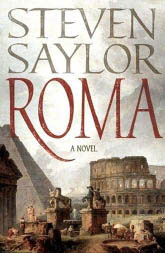Mostrar mensagens com a etiqueta Didáctica. Mostrar todas as mensagens
Mostrar mensagens com a etiqueta Didáctica. Mostrar todas as mensagens
segunda-feira, setembro 24, 2007
Romani ite domi!
Centurion: What's this, then? "Romanes eunt domus"? People called Romanes, they go, the house?
Brian: It says, "Romans go home. "
Centurion: No it doesn't ! What's the latin for "Roman"? Come on, come on !
Brian: Er, "Romanus" !
Centurion: Vocative plural of "Romanus" is?
Brian: Er, er, "Romani" !
Centurion: [Writes "Romani" over Brian's graffiti] "Eunt"? What is "eunt"? Conjugate the verb, "to go" !
Brian: Er, "Ire". Er, "eo", "is", "it", "imus", "itis", "eunt".
Centurion: So, "eunt" is...?
Brian: Third person plural present indicative, "they go".
Centurion: But, "Romans, go home" is an order. So you must use...?
[He twists Brian's ear]
Brian: Aaagh ! The imperative !
Centurion: Which is...?
Brian: Aaaagh ! Er, er, "i" !
Centurion: How many Romans?
Brian: Aaaaagh ! Plural, plural, er, "ite" !
Centurion: [ Writes "ite"] "Domus"? Nominative? "Go home" is motion towards, isn't it?
Brian: Dative !
[the Centurion holds a sword to his throat]
Brian: Aaagh ! Not the dative, not the dative ! Er, er, accusative, "Domum" !
Centurion: But "Domus" takes the locative, which is...?
Brian: Er, "Domum" !
Centurion: [Writes "Domum"] Understand? Now, write it out a hundred times.
Brian: Yes sir. Thank you, sir. Hail Caesar, sir.
Centurion: Hail Caesar ! And if it's not done by sunrise, I'll cut your balls off.
domingo, setembro 16, 2007
Steven Saylor, "Roma" (II)
Thus the story begins much earlier than the birth of the mythological twins, in the VIIIth century. Saylor's narrative begins about 1000 b.C., in the banks of the Tiber, where Lars and her daughter Lara initiate the cult of Fascinus, the flying phallus. Of course, it may not be a coincidence that Lara is the name of a Tiber nymph and mother of the Lares. Here begins Saylor's ingenious mixing of myth, legend and history, best seen in Chapter II, presenting as the legend of Cacus and Hercules, and that's also when we see for the first time the Potitii, descendents from Lara and the Fascinus wearers, and the Pinarii - and the legendary origin of the herculean cult in Rome, as told by Vergil in Aen. VIII, 262-279. Always skillfully, through the rest of the book we witness the legendary birth of the Roman Republic, in 753 b.C. (chapter III), the Republic, Coriolanus's sedition and Lucretia suicide (chapter IV), Verginia's rape and the XII tables (chapter V), the capitoline geese and the Gauls (chapter VI), Appius Claudius Caecus and the building of the Appian Way (chapter VII), Scipio Africanus and Plautus (chapter VIII), the Gracchi (chapter IX), Sulla's horror and young Caesar (chapter X), and finally the rise of Octavianus (chapter XI).
We could be lead to think such a large chronological span would become a fragmentary narrative. It is not. Roma is rather a coherent and fascinating narrative fabric. And, as usual, Saylor's erudition is irreprochable - but, what's most, it nevers get boring, it never sounds as a History lecture, as it happens with so many historical fiction writers. Saylor's narrative is vivide and dynamical, we often think he actually was there, witnissing all and telling us what he really saw (please Steven, take me with you next time you travell to ancient Rome). And that's not something easy to do: the trick in historical fiction is to make us believe the author was there, and make us think "I know this is not real, I know I'm being dupped, but I like it and I don't care, as this could and may have happened just like he says".
But to forget willfully this was writen not by a roman but by a XXIst century man, that's only one of Roma's many qualities. Roma is an excellent novel, skillfully writen, a finest historical fiction, proving once again (if necessary) Steven Saylor is one of the best storytellers in modern fiction.
About the didactical qualities of this novel, that's something to talk about in another post. Coming soon.
Etiquetas:
Didáctica,
Romance Histórico,
Steven Saylor
terça-feira, julho 31, 2007
Steven Saylor, "Roma"
A complete review in english can be read here:
http://culturaclassica.blogspot.com/2007/09/steven-saylor-roma-ii.html
http://culturaclassica.blogspot.com/2007/09/steven-saylor-roma-ii.html
 Steven Saylor é um dos mais interessantes cultores do romance histórico na actualidade, concretamente na ficção de temática romana. Tornou-se conhecido graças à série Roma sub Rosa, onde se acompanha o estertor da República através das aventuras de Gordiano, uma espécie de detective privado avant la lettre. Com efeito, é difícil de distinguir a linha que separa o romance histórico da narrativa de mistério, nesta Roma sub Rosa. Gordiano é a personagem principal numa narrativa feita na primeira pessoa. Movimenta-se entre os notáveis do seu tempo: trabalha para Cícero contra Sula, bebe copos com Catulo, deixa-se seduzir por Clódia, priva com César e Cleópatra, é anfitrião de Catilina, incompatibiliza-se com Crasso... E em momento nenhum parece a forçada a narrativa de Saylor. As personagens têm alma, não se limitam a ser manequins numa reconstituição histórica. Aliás este é um dos pontos fortes de Saylor: os seus mistérios são verdadeiras aulas de História Antiga, sem que em momento algum sintamos que nos está a ser dada uma aula. Os dados históricos e culturais fluem naturalmente, num registo "toda a gente sabe isto, mas vamos lá recordar para os mais distraídos" que não viola nunca a hábil verosimilhança narrativa de Saylor.
Steven Saylor é um dos mais interessantes cultores do romance histórico na actualidade, concretamente na ficção de temática romana. Tornou-se conhecido graças à série Roma sub Rosa, onde se acompanha o estertor da República através das aventuras de Gordiano, uma espécie de detective privado avant la lettre. Com efeito, é difícil de distinguir a linha que separa o romance histórico da narrativa de mistério, nesta Roma sub Rosa. Gordiano é a personagem principal numa narrativa feita na primeira pessoa. Movimenta-se entre os notáveis do seu tempo: trabalha para Cícero contra Sula, bebe copos com Catulo, deixa-se seduzir por Clódia, priva com César e Cleópatra, é anfitrião de Catilina, incompatibiliza-se com Crasso... E em momento nenhum parece a forçada a narrativa de Saylor. As personagens têm alma, não se limitam a ser manequins numa reconstituição histórica. Aliás este é um dos pontos fortes de Saylor: os seus mistérios são verdadeiras aulas de História Antiga, sem que em momento algum sintamos que nos está a ser dada uma aula. Os dados históricos e culturais fluem naturalmente, num registo "toda a gente sabe isto, mas vamos lá recordar para os mais distraídos" que não viola nunca a hábil verosimilhança narrativa de Saylor.Vem isto a propósito do novo romance de Steven Saylor, Roma, editado há poucos meses, e ainda não traduzido em Português (mas vai ser, garantiram-me o autor e a tradutora, a doutora Maria José Figueiredo, do Departamento de Filosofia da FLUL). Ainda não o terminei, vou em cerca de metade. Não me está a desiludir. Pelo contrário. Roma é Saylor no seu melhor. O romance percorre a história de Roma, desde o período anterior à fundação até à morte de César. Saylor recorre a um hábil estratagema que lhe permite contar uma história que dura mil anos, mantendo sempre um fio condutor coerente. A obra está dividida em vários capítulos, histórias aparentemente independentes. O ponto de união é a história de duas famílias patrícias, os Potitii e os Pinarii, e de um talismã que vai passando de geração em geração. Mas isto é apenas o pretexto para um objectivo bastante mais ambicioso: contar alguns dos principais momentos da história de Roma. Sem que, de novo, em momento algum pareça que está a fazer aquilo que de facto está a fazer: dar-nos uma aula magistral sobre a história de Roma, tanto a histórica como a lendária. É assim que no primeiro capítulo, "A stop on the salt route (1000 BC)", se dá conta, por entre uma história de amor, ciúme e morte, da importância estratégica, do ponto de vista comercial, do território que viria mais tarde a ser Roma. No segundo capítulo, "A Demigod passes through (850 BC)", é-nos apresentada uma versão da lenda de Hércules e Caco, e do início do culto de Hércules no território da futura Roma. O terceiro capítulo, "The twins (757-716 BC)", apresenta-nos Rómulo e Remo. Assistimos à ascensão e queda de Rómulo, não de uma perspectiva lendária, mas humana e verosímil quanto baste. O quarto capítulo, "Coriolanus (510-491 BC)", narra, como o título indica, a lenda de Coriolano, bem como a queda da Monarquia e a vitória da República, sem esquecer, como é evidente, o suicídio de Lucrécia. O quinto capítulo, "The twelve tables (450-449 BC)", situa-se durante o governo dos Decênviros, e não esquece a morte de Virgínia às mãos do próprio pai, elemento à volta do qual, de resto, se constrói a narrativa. E mais não digo, pois ainda agora estou a iniciar o sexto capítulo, "The vestal (393-373 BC)".
Além da sua função de entretenimento e fruição estética, Roma tem evidentes potencialidades didácticas. Estes capítulos podem ser utilizados de forma autónoma, no ensino secundário, como motivação para o estudo das temáticas históricas e culturais neles presentes. Porque, insisto, Saylor é dono de uma erudição assinalável, apresentando a História de Roma com um rigor irrepreensível. Mas sem nunca deixar de o temperar com o seu extraordinário talento de contador de histórias. Um dos mais interessantes no campo do romance histórico.
http://www.stevensaylor.com/
Etiquetas:
Didáctica,
Romance Histórico,
Steven Saylor
Subscrever:
Mensagens (Atom)



